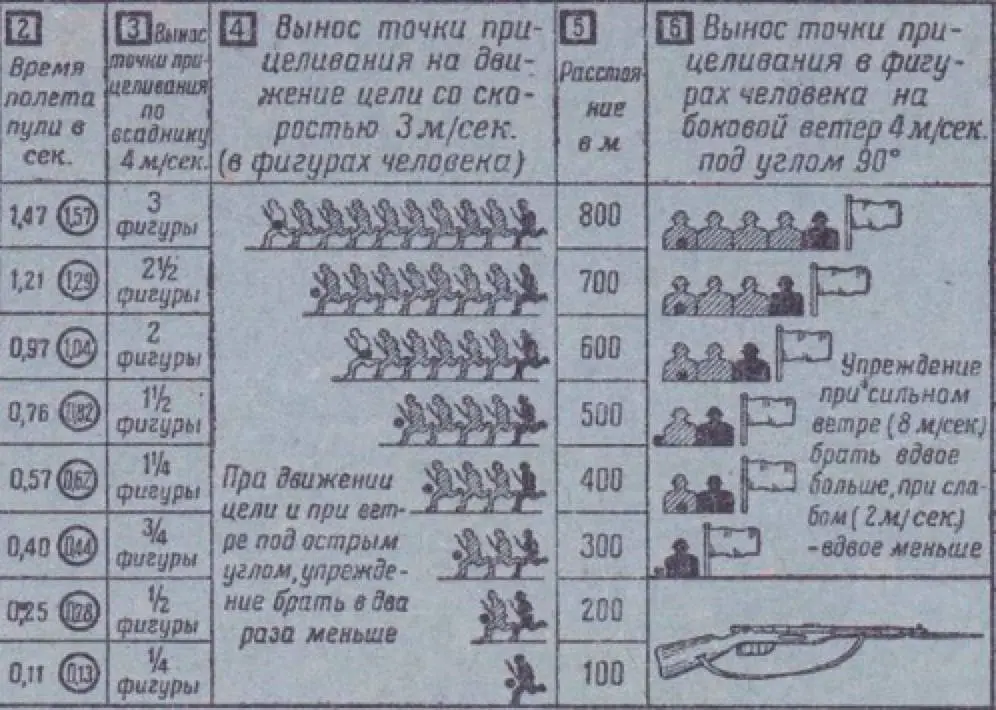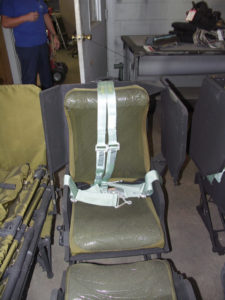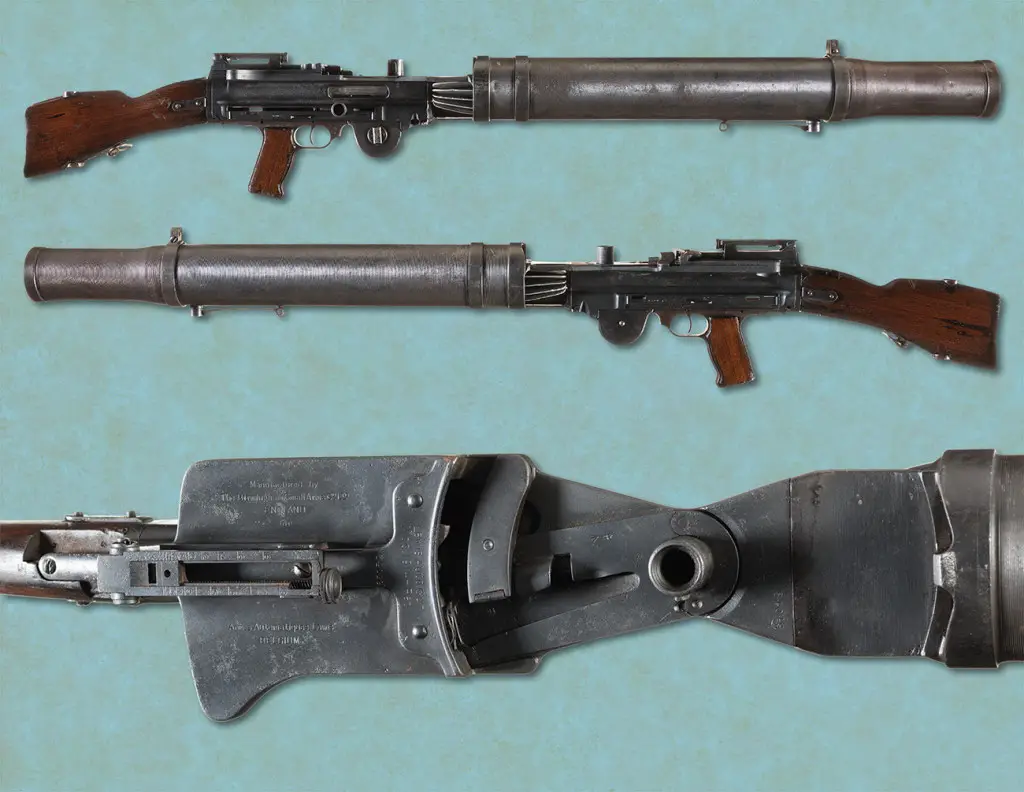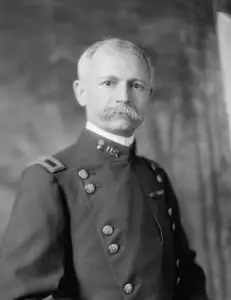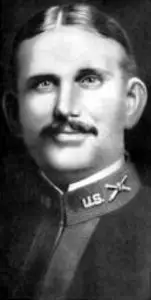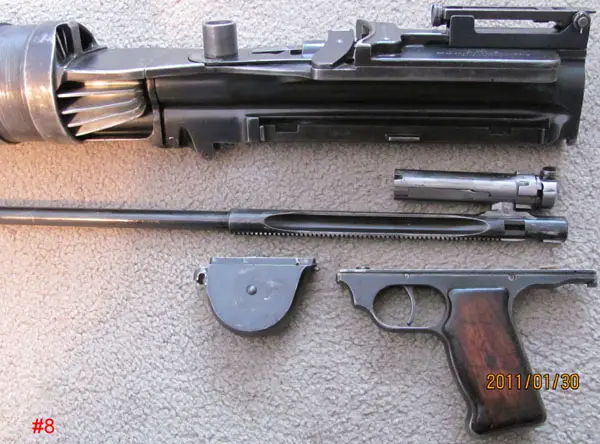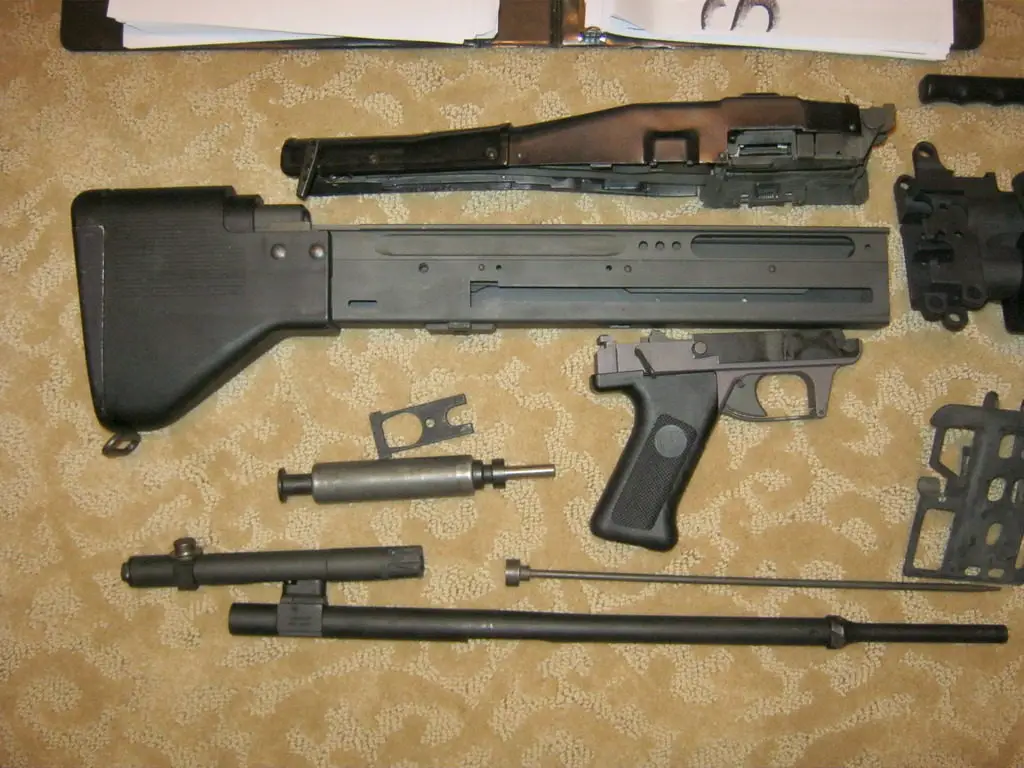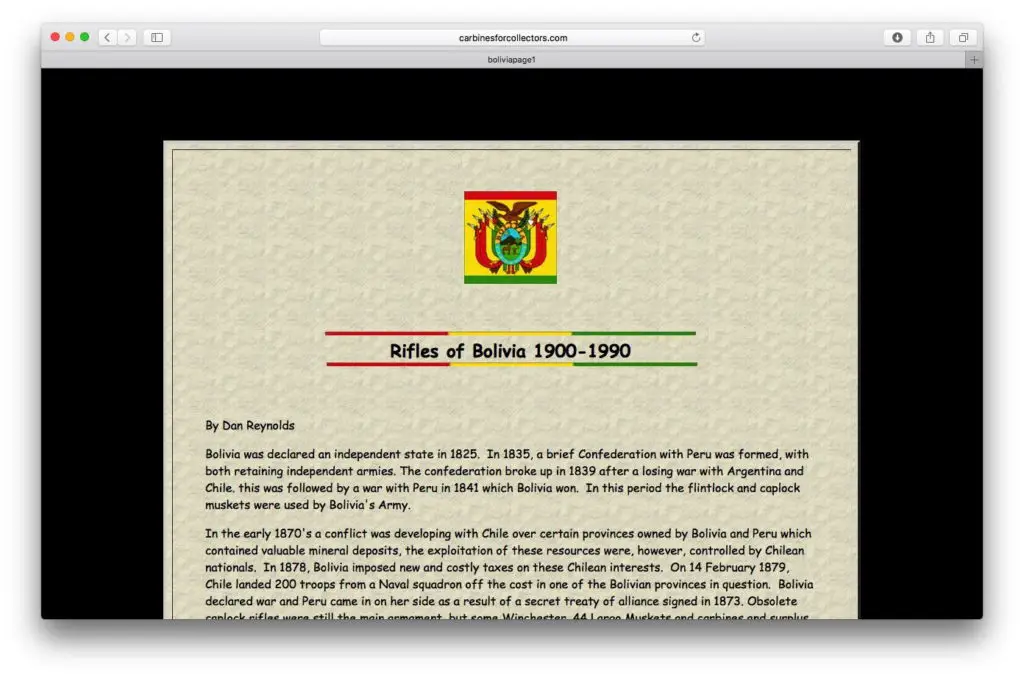Monthly Archives: October 2016
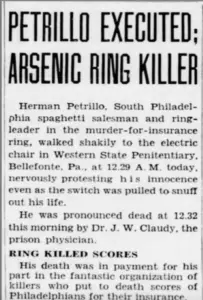 In one of the creepiest mass-murder rings in American history, some 50, or 100 — no one knows the real number — poor Italian immigrants were murdered for money in the late 1930s by a ring organized and managed by cousins Herman and Paul Petrillo. Both would go to the electric chair in 1941; cousin Morris Bolber and 20-odd other defendants would get life in prison. The Philadelphia papers’ archives inspired a recap on the 75th anniversary of Herman’s execution:
In one of the creepiest mass-murder rings in American history, some 50, or 100 — no one knows the real number — poor Italian immigrants were murdered for money in the late 1930s by a ring organized and managed by cousins Herman and Paul Petrillo. Both would go to the electric chair in 1941; cousin Morris Bolber and 20-odd other defendants would get life in prison. The Philadelphia papers’ archives inspired a recap on the 75th anniversary of Herman’s execution:
Facing their own financial straits through the years, spaghetti salesman Herman Petrillo had became [sic] skilled in counterfeiting, while tailor Paul Petrillo had developed talents for insurance scams. They joined forces with another cousin, Morris Bolber, and created a “matrimonial agency” matching widowed women with new husbands, usually hapless Italian immigrants.
But they didn’t do it in the name of love.
The criminal masterminds would also initiate life insurance policies for these new husbands, and see to it that they succumbed to “accidental” deaths shortly thereafter. Bolber would help file insurance claims to capitalize on a provision in the policies that allowed for double payment if the death was accidental.
The “accidents” ranged from drownings to poisonings, which led the local press to name the gang “Arsenic Incorporated.”
The scam, which eventually included up 24 participants, started to unravel in October 1938. Police were getting suspicious as more immigrants of similar circumstances were dying, their toxicology reports showing elevated levels of arsenic.
You can see the inspiration for some classic films noirs and golden age detective novels, there. You can also see a reminder that the crime of Cain is timeless, didn’t come about with the Chinese invention of gunpowder in or around the 12th Century, and wouldn’t go away if the magical thinkers actually succeeded in their ambition of making firearms magically disappear.
VA Supremo Lied to Defend Perv PA
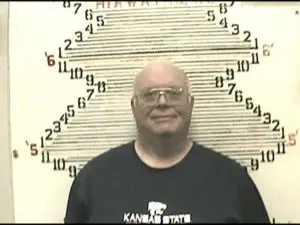
Mark Wisner, the pawsy perv PA of Leavenworth. Why is he smiling in a jail mugshot? Looking forward to dropping the soap?
Physician’s Assistant Mark Wisner (WISE-ner) admitted to sexually abusing veterans at the Leavenworth, Kansas VAMC. As the investigation continued, more young male vets came forward with tales of groping. Wisner tried to minimize his conduct. It was only one. It was just “touching.”
Wisner might have been charged with serious crimes, but instead, VA leaders cut a deal with him: go quietly, and you can retire. And VA officials at the very highest level continued to watch Wisner’s back, in a way they don’t look out for mere veterans.
Secretary Bob McDonald, whose tenure has been marked by management of the VA for, by, and of the employees, even lied to protect the pawsy perv.
In September, Sen. Jerry Moran questioned VA Secretary Robert McDonald on the handling of Wisner’s case. McDonald maintained Wisner resigned.
Because a pension from a VA job is a precious, untouchable entitlement — whereas veterans’ benefits are mere prolefeed for a lesser class than the exalted nomenklatura. Why, if you punished the pervs, the next thing you know, you’d be looking to fire the merely incompetent.
The VA spokesman at Leavenworth (every facility has a few, and they’re all getting six figures to lie to the public and the media) also lied about Wisner, until caught.
In previous statements from the Leavenworth VA, leaders only said Wisner “left.” The spokesperson did confirm to 41 Action News Wednesday he retired.
The difference between “resigned” and “retired” is not semantic. It means Wisner is still getting paid — your tax dollars in action.
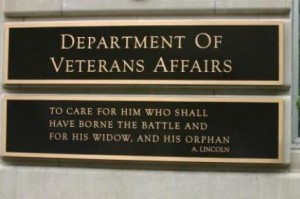 A timeline established by KHSB 41 Action News described Wisner’s downfall. To that, we added a few other key moments in this long-running case.
A timeline established by KHSB 41 Action News described Wisner’s downfall. To that, we added a few other key moments in this long-running case.
- 19 May 14: VA opens an investigation file on Wisner, after he is credibly accused of groping a patient. VA interviews him, and he admits “inappropriately touching” “at least one” patient. VA keeps him on.
- Feb 2015: Wisner, now accused by seven vets of groping, surrenders his PA license. Wisner “acknowledged in a consent order that he used his position as a physician’s assistant to commit sexual battery against veterans.” VA keeps him on in “administrative” status.
- 9 Jul 15: Documents show he did genital and testicular exams that were not medically indicated, “for his own pleasure.” VA keeps him on.
- 12 Jul 15: Two brothers groped by Wisner speak out on KHSB. VA keeps him on.
- Aug 2015: Wisner accused of overprescribing painkillers. VA keeps him on.
- 7 Aug 15: Wisner appears in court on sexual battery and felony aggravated criminal sodomy charges. VA keeps him on.
- 27 Apr 16. A veteran charges that, “Wisner repeatedly fondled him and made inappropriate remarks regarding the veteran’s genitals. He also claims Wisner suggested he would withhold pain medication if he did not allow Wisner to touch his private area.” Wisner did these examinations without gloves. VA keeps him on.
- 24 Jun 16: Prosecutors add an additional sexual battery charge. Around this time, Wisner retires from the VA with full benefits.
- 29 Jul 16: Wisner is revealed to have a criminal record for sex crimes in California from 1987. He admitted this when hired by VA in 1992. VA hired him anyway. And VA kept him on. VA refuses to discus his hiring, but the Leavenworth six-ligure spokesman describes Wisner’s serial groping as, “the timely, high-quality care and services [vets] have earned and deserve.” The spokesman also lies about Wisner’s departure.
- 3 Aug 16: Wisner’s accusers now number fifty. Lawyers working for McDonald and VA are not working on Wisner’s criminal defense, but they are trying to stamp out malpractice suits, on the interesting grounds that when he started groping, he was magically off the .gov clock and on his own time.
- Sep 2016: Sen Moran asks VA Secretary Bob McDonald about Wisner. McDonald lies. To protect him? To protect the VA? Because it’s become a habit? VA keeps McDonald on.
Russian Marksmanship Card, circa 1945
Here’s a Soviet Marksmanship Card that appears to be from the Second World War era (Great Patriotic War to the Russians). Because it is posted on LiveJournal, which is anti-gun, you must click past an “over 18 warning” to follow the link (it is on an interesting Russian blog); that feature breaks Google Translate, so you have to read Russian to read the blog (or the post).
That’s not as disabling as it might be, because you have to read Russian to read the card. That’s a pity, especially for Mosin-Nagant fans, because the card is densely packed with information on how to use this rifle. We don’t know how widely these were disseminated to Soviet troops (or what was on the back of them — there must have been something?), but a lot of thought and ballistic knowledge went into the card’s creation. The soldier who mastered this card, and better yet memorized much of its contents, would truly be a master of his Mosin-Nagant rifle or carbine.
The card contains 16 numbered items, some of which are tabled together. Item 1 is a simple ruler along the top edge of the card, which is how we know for sure this was meant as a pocket card and not as a wall poster.
For example, this diagram, which is part of Item 9 on range estimation, comes after a list telling you what you are likely to see near and at distance. It lets you use the rear sight notch as a range finder, given average size Nazis. (The caption says “rifle-rangefinder”). Did you know your 91/30 could do that?
The targets appear to have British helmets, which is not unusual in interwar Soviet manuals, but this document “feels like” it was produced towards the end of the World War, probably in 1945.
Most rifles can be used this way. For instance, the front sight blade of an M16A1 or A2 is the width of a man’s chest (or an E-type silhouette target) at exactly 175 meters. If the manufacturer of your iron-sighted rifle did not provide such a table for you, you can make your own with known distances (or a laser rangefinder) and a man-sized silhouette.
Next let’s estimate lead on running-man targets, and windage in a stiff wind (4 m/sec), at common combat ranges. Soviet marksmanship trainers were quite ambitious, inculcating confidence in the accuracy of the service rifle to 800 meters.
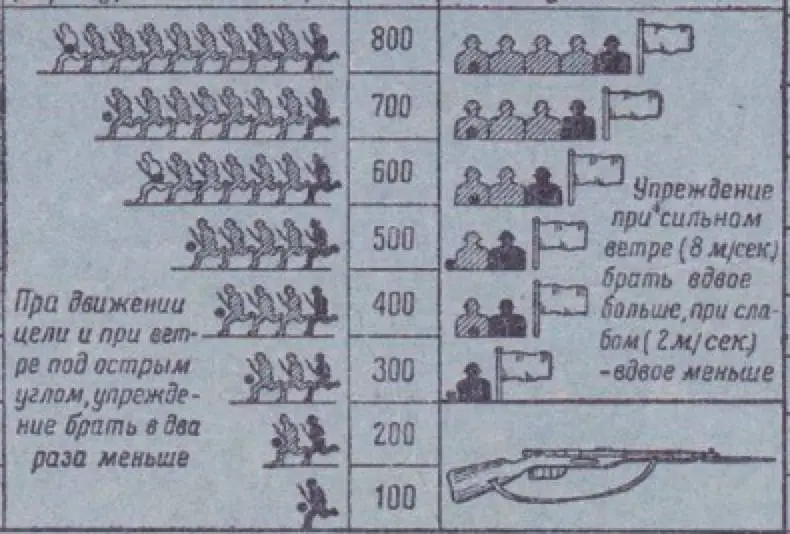 These calculations are based, of course, in the time of flight of the bullet, and if you noted, we snipped out only part of the table, which comprises Items 2-6 of the card (the image above is the graphic part, minus explanatory text, of Items 4-6. Expanding the image to include the legends and Items 2 and 3 on the left we see that Item 2 is the actual time of flight, in seconds and hundredths of seconds. The open numbers are for the rifle, and the circled numbers for the (presumably, M1944) carbine, which is a convention honored throughout the card.
These calculations are based, of course, in the time of flight of the bullet, and if you noted, we snipped out only part of the table, which comprises Items 2-6 of the card (the image above is the graphic part, minus explanatory text, of Items 4-6. Expanding the image to include the legends and Items 2 and 3 on the left we see that Item 2 is the actual time of flight, in seconds and hundredths of seconds. The open numbers are for the rifle, and the circled numbers for the (presumably, M1944) carbine, which is a convention honored throughout the card.
Item 3 is windage in a 4 m/sec wind, measured in body-widths (figury); part 4 lead on a 3m/sec running man, and part 6 an illustration of what they mean by the windage in Part 3, assuming a 90º crosswind. The text block there tells you to double the windage in double the wind, and halve it in half. (Hey, it’s a card for Army privates, least common denominator).
Item 10 is a penetration table, running from Steel Plate (6mm) to Soft Wood (85 cm) in no particular order. Some items on this list would not be much use to Mosin users in Cuba or Vietnam, like Snow (3.5 meters), but were certainly important to anyone fighting for the soil of Russia itself.
While the Mosin rifle is long obsolete (even Russian honor guards usually carry the successor SKS), modern 7.62 x 54 mm ammunition is remarkably similar in ballistics to this wartime load; only the quality control has changed (it’s better now). It will still take about 1.47 seconds for your round to go 800 meters, and the amount you’ll need to adjust for wind or lead a running target still complies with Newton’s Laws in the same exact way.
Just because something is old, doesn’t mean the men who invented and applied it were primitive. As this illustrates, they probably have a lot to teach us!
Can a gun fly?
Can you make a jetpack out of rifles? Egghead comic XKCD finds the answer. An AK’s recoil is actually greater relative to its weight than a Saturn V’s thrust. Soviet engineering, FTW. (If their rifles can do that, no wonder they’ve always had a lead in heavyweight boosters).
Well, the AK-47 can take off, but it clearly doesn’t have the thrust to spare to lift anything weighing much more than a squirrel.
The problem comes when you get to the point where the rifle goes to fire Round 31, which it does not have. From there, gravity wins. But… what if you took a lot of AKs?
Is something better than an AK? Sure, a GAU-8. Is anything better than the GAU-8… and if there is, did the Russians build it?
Read The Whole Thing™. It’s fascinating!
When Guns are Outlawed, Only Outlaws will have Fentanyl
 It’s a high so sublime they feel like it’s worth dying for. And they do, in large numbers when you aggregate them, but generally, in one squalid apartment or filthy alley at a time. In the former mill town of Rochester, New Hampshire, a couple of addicts acted out this well-worn morality play this fall.
It’s a high so sublime they feel like it’s worth dying for. And they do, in large numbers when you aggregate them, but generally, in one squalid apartment or filthy alley at a time. In the former mill town of Rochester, New Hampshire, a couple of addicts acted out this well-worn morality play this fall.
On the afternoon of Sept. 15, police were sent to an Osborne Street residence for a reported drug overdose. They found a 23-year-old man, who was not identified in a news release, deceased. His death appeared to be the result of drug use.
An autopsy was performed by the Office of the Chief Medical Examiner on Sept. 16, but the cause of death was pending toxicology reports. Test results determined he had died as a result of acute fentanyl intoxication.
Police continued to investigate the death and ultimately charged [Nina] Batista, 22, with allegedly supplying the victim with the drugs.
via Rochester woman charged with giving fentanyl to man who died from OD | New Hampshire.
 The technical charge is “dispensing a controlled drug with death resulting,” a Class A felony.
The technical charge is “dispensing a controlled drug with death resulting,” a Class A felony.
While Nina Batista looks more like she’s 14 than 22, she’s a career drug dealer who is out on bail for selling drugs. Her boyfriend is in jail for selling drugs. If she’s not going to have the decency to OD herself, she needs a sentence where she can die in jail.
According to an affidavit, Nina Batista, 22, admitted she sold heroin and cocaine to Zackariah Glidden before his death Sept. 15. Glidden was found unresponsive at an Osborne Street residence at around 1 p.m. that day.
A detective who responded to the scene spoke with Glidden’s stepfather, Kenneth Moors, who said he picked Glidden up from work in Portsmouth around midnight and they drove straight home. He reported seeing Glidden on his skateboard in the NAPA Auto Parks parking lot at about 3 a.m.
As police investigated, they found Glidden was having a conversation with someone named “Dusty” on his cellphone before he overdosed on fentanyl. They believe over the course of three days there were three drug related transactions between Glidden and the person using a phone belonging to “Dusty.”
Batista is engaged to a man named Dustin Howland. Police concluded Batista was using the phone because Howland has been in jail since July.
On Sept. 19, Rochester police made contact with Batista in the parking lot of Arthur’s Market. Detectives made casual conversation with her, and she confirmed she was living at 40 Hancock St., which is directly across the street from NAPA Auto Parts.
On Oct. 3, detectives asked if they could meet with Batista. Detectives seized the phone and she agreed to give them a statement. During that conversation, Batista admitted to selling about 60 grams of heroin a week.
After receiving a toxicology report for Glidden Oct. 20, police took Batista into custody the following day and charged her with dispensing a controlled drug, death resulting.
The charge carries the potential of life in prison. She should be offered the alternative, of taking her 60 grams of heroin all at once. It’s a win for civilization either way.
(In New Hampshire, there are about 12-15 murders a year, mostly among the drug dealer community. And there are hundreds and hundreds of overdose deaths).
How the Helicopter Seat Came Home
The phone rang and one of the full-timers in the National Guard Special Forces Company picked it up.
“Sergeant Pseudonym speaking, not a secure line.” (There was a long spiel you were supposed to say. It wasted time. We didn’t bother, to the irritation of all the sort of officialdom whose enmity told you you were on target).
“Can you guys destroy two helicopters?”
Can we destroy [fill in the blank]? Is the Pope Catholic? Is water wet? Do Kennedys party hearty? “Sure thing. What’s the deal?”
It turns out an Army Guard unit in our unit’s state (as is common with SF Guard units, most of us individuals were from out of state) had transitioned from flying attack helicopters — obsolete, Vietnam-era UH-1B and AH-1S models — to being a Black Hawk medevac unit. Good mission, and they sure loved the extra power and twin-engine safety of the ‘Hawk, as opposed to the Huey, which was revolutionary in its day, but was a product of the time when cars had tail fins, and putting a turbine engine in a helicopter was a new and dodgy thing.
The commander of the unit had turned in most of the Hueys and Cobras for their smelted future as Hyundai cylinder heads and COSCO screen doors, but he had saved the two most historic craft in his fleet with a view to donating them to an air museum.
The air museum said, “No, not unless you also give us money to restore them.” Well, that the skipper didn’t have. So he tried another air museum.
And another.
And another.
Hueys were either too recent, or too plebeian, and museum curators tend, these days, to be Baby Boomers whose fondest memory of the Vietnam War is how they sent some poor black city kid or hayseed Polack farm boy in their place, so the iconic copters sat at the unit’s old hanagar on an Air Force Reserve base for months that turned into years. The commander with museum ambitions changed out. The Air Base commander who had told him,” leave them as long as you need to,” changed out. The guys that changed out, changed out, as season follows season. The two historic copters were now derelict trash interfering with good order on the Air Base. Not to mention the planned reuse of the hangar as a sort of pavilion with a podium from which the new Wing King could speak enlightenment to his adoring troops, in mandatory attendance. The Air Force Reserve poked the Army National Guard State Headquarters (since renamed Joint Force HQ, and a more wretched hive of scum and villainy, not to mention of well-connected staff officers entering Year 16 of war without a day in 1000-mile proximity to same, there never was). “Get off my lawn,” was the subtext of the message.
In State HQ, the lights went on and unholy things you’d rather not dwell on scattered and scurried. The Fundamental Law of Plumbing applied and you-know-what flowed downhill until the tasking reached some harried Property Book Officer (“Extra duties I don’t want for $500, Alex!”) in the form of an unambiguous command: make those helicopters disappear.
Putting them on eBay was considered, until an outbreak of that persistent plague that rises up and inhibits the human race from truly taking charge of its God-given mastery of the planet.
Yes, lawyers.
The lawyers pointed out that the helicopters must be demilled, that is, rendered unusable and their key parts rendered unusable as weapons of war. Just having engines and avionics out of them — which parts had been cannibalized, or souvenired, we’re not really clear which, in the intervening decade — would not do. They needed to be thoroughly and completely destroyed.
Now, State HQ being the natural habitat of staff officers, hothouse flowers, and power groupies of all kinds, you could look long and hard without finding anyone who had ever destroyed anything more substantial than a subordinate’s part-time Guard “career,” or had any idea how to go about it. So the search began for someone who could destroy something, a talent that is in rather short supply in the upper regions of today’s military.
They found “Company C, XX Special Forces Group” in a phone directory, and someone dimly remembered a movie with John Wayne.
“So, can you guys destroy two helicopters?”
“Yeah, we can do that.”
The question became how to (1) not offend the various Air Base Commanders, Wing Kings, panjandrums, sachems, sagamores and satraps on the Air Base and (2) get the max training value from a couple of helicopters, in such a way that the rotorcraft would be rendered indisputably hors de combat. Everybody’s first choice, “Demo crosstraining!” would certainly have reduced the ships to coin-sized and smaller shards of aircraft aluminum, with all the joy and adventure that comes from having your medics, commo men, and the knuckle-dragging weapons men play with C4, hollow charges, ANFO improvised cratering charges and all kinds of things, usually without bothering with all the ugly arithmetic that the actual demo men have to learn. (“That equation needs more of factor P for Plenty!” FOOM!).
That idea was vetoed by alarmed Air Force officers, and a new requirement was explained: destruction of the rotorcraft had to be environmentally sound.
That meant that Plan B, the big bonfire hot-enough-to-ignite-aluminum in the swamps, pardon, wetlands on the far side of the runway — an area we knew all too well from jumping a tad early on our runway-centric drop zone — was right out, too.
What we came up with was, since medical combat trauma crosstraining was already on the schedule, we’d use the helicopters to stage crash scenes, giving the guys some practice in crash rescue and recovery and casualty evacuation as well as initial treatment in the austere environment.
We hatched an idea with a Chinook outfit to longline the Hueys to a point about 200 feet over the clearing we were given as a training area, and then drop them in. Nothing simulates a helicopter crash like a falling helicopter, right? But that was vetoed by State HQ, with some hurtful words about the unwisdom of letting aviators and SF mission-plan over pitchers of beer. Instead, we had to crash the helicopters using our own resources.
It worked better than expected, although they were kind of sore about the damage to the 5-ton truck (a Huey, it turns out, is stronger than you think).
One of the resources a Special Forces unit does not have is a bunch of privates, and so it’s quite normal for your 5-ton driver to be a bored senior sergeant. And it’s not unheard of for SF guys to take a shine to souvenirs. And if you look around the ranks, you just might find a guy who has an A&P rating and an incredible set of tools in his trunk.
And so it came to pass, when, hours after the exercise was supposed to be entirely secure, with the medical trauma training pronounced a challenge and a success, and even the lawyers thrilled with the shredding of the helicopters incidental to the training evolution, and the green eyeshades of the Finance Corps pleased with the economy of it all, a borrowed 5-ton wrecker dragged in our hors de combat 5-ton cargo truck, complete with a hunk of rotor blade embedded in the brush guard, radiator and fan, and a UH-1B command pilot seat, inexplicably, in the back.
The mechanic cursed his friend, because it was so heavy. We’d guess about 250 lb. It rode the rest of the way home hanging out of the trunk of an old Mustang, into which it did not fit (an attempt to borrow the 5-ton for this purpose was met with unamusement, and pointing out that the 5-ton was paws-up for the next couple of weeks). Then it was horsed up stairs into a Man Cave or War Room, and spent several years there providing a quasi-comfortable seat for reading war books in, before migrating to its current location in the War Room (just inside the Reviewing Our Panzers Balcony, which is really a thing) at Hog Manor. And now, it is promised to an old teammate for his man cave.
Hey, he’s younger. And he, too, was there that day.
Sorry about the truck.
Why did Ordnance Hate the Lewis Gun?
After the Great War, long-serving Chief of Ordnance General William Crozier denied vehemently that his dislike of Col. Isaac N. Lewis had anything to do with Ordnance’s rejection of the Lewis Gun (which was, in fact, only partly invented, but wholly promoted, by Lewis). It is a fact that the Army rejected the Lewis several times, and that Lewis, like most American machine gun inventors, had to go to Europe to find a market for his invention. It is a fact that Crozier and his subordinates preferred their own, Springfield-Armory-built, Benet-Mercié Machine Rifle to the Lewis design.
It is also a fact that the Lewis served satisfactorily with several nations including Britain, Russia, Belgium, and even in those US services that were reasonably remote from General Crozier’s authority, the Air Corps and the Marines and Navy.
After the war, called on the Congressional carpet, Crozier mustered the arguments of his ordnance officers and supporters. He produced a letter by Captain T.N. Gimperling, written to the Infantry Journal (but sent via Crozier, who chose at the time not to forward it). The entire letter is in Crozier’s memoir on pp.88-93. Here’s what he thinks of the Lewis:
It is our opinion that the parts of the Lewis gun are not properly finished and that they are made of a rather poor grade of material. The gun has a number of steel stamped parts, improperly heat-treated, which cause jams and a consequent inefficiency in the gun. As an example, the magazine is made of a very thin, flimsy steel stamping, toggled up with a combination of soft aluminum core and metal strips which are riveted on. This causes the magazine to be very vibrant and susceptible to the strain of feed pawl functioning. The ejector is made of a thin steel stamping, improperly heat-treated, and very often it bends, nearly always batters on the end, through bolt action, in the course of eighty to one hundred and fifty rounds. The feed pawls, stop pawls and rebound pawls seem to be made of a poor grade of steel. The gas cylinder is made of a twenty gauge mill run steel, which has been found to be full of scale pits and imperfections. We believe that the gun, as at present constructed, could be made in lots of a thousand or more, at approximately fifty or fifty-five dollars per gun, for material and labor. It is now sold to the Government for a thousand dollars.
What did Gimperling think of the Benet-Mercié?
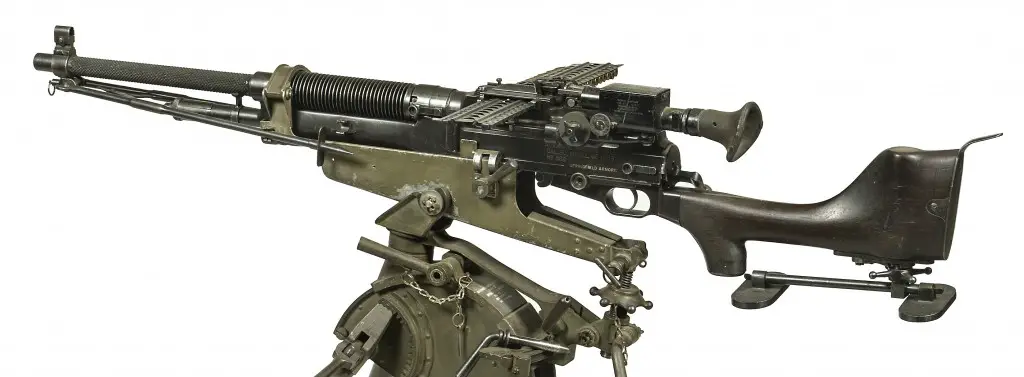
Benet Mercie Machine Rifle, a Hotchkiss-derived oddity.(Hotchkiss was another American inventor who took his wares to Europe, actually).
From the standpoint of mechanics, the Benet- Mercio gun is a masterpiece, inasmuch as the parts are finely finished and are made of excellent material and are properly treated where this is essential. The price at which the Government issues this gun is approximately $412.00, which, it is believed, would net, to a private manufacturing concern, but a fair profit over the cost of production.
The School of Musketry, too, would criticize the workmanship of the Lewis Gun, in a 7 Jan 1917 report also featured in Crozier’s book (pp. 93-95).
Thirteen Lewis guns were used in the firing. The guns were new. Except for some possible test firing not a shot had been fired from any of them prior to their use by this class. When they were received at the school it was found that several of the parts did not fit properly. This was true in particular of the joints between the barrel groups and the receiver groups. The other cases of misfit were due largely to poor workmanship and lack of finish.
When the firing of the guns began there was very little trouble with them that could not be accounted for by the fact that the personnel of the class was inexperienced and that about 3 per cent of the am- munition used was found to be faulty. After about 2,000 rounds had been fired from each gun, jams began to occur which were due to causes other than untrained personnel and defective ammunition.
By far the greater portion of jams due to defec- tive mechanism were caused by the wear of the feed operating arms and stud, the bending of the cartridge guide, and the faulty construction and bending of the magazines; and of these about one-half were due to faulty magazines.
The school also blamed the design of the Lewis for 44 broken parts, 17 worn parts (and 57 worn magazines), and 162 lost parts (!) during these tests.
Even when directed to buy the Lewis by Congress, Crozier dragged his feet, leaving American forces headed to Europe dependent on the French for small arms (as they were for artillery, another botched Ordnance responsibility).
Because the Ordnance Department did buy 353 Lewises originally manufactured by Savage for Canada, Lewis received substantial royalties on these guns — over $10,000. He sent a check for the full amount to Secretary of the Army Newton Baker. Crozier was furious, in part that Lewis hadn’t sent the check to him as Chief of Ordnance, and wrote Baker a memo suggesting that Lewis had an ulterior motive, and hinting that Baker should refuse the refund. Baker wrote to Lewis, enclosing Crozier’s smarmy memo, and stressing that accepting the check would not mean he was taking any side in any of the Crozier-Lewis disputes, which by this time were known to all in uniform and in Congress. It was probably Lewis’s turn to be furious, but he wrote to Baker, assuring him that his check was intended to go to the United States Treasury, as Lewis did not wish to profit by sales to the United States Government. He couldn’t resist bashing Crozier:
In the present very grave national emergency, I am directly instrumental in supplying, delivering and putting on the actual firing lines against the fighting enemies of my country more machine guns each week than the present Chief of Ordnance has supplied for the use of our own army of defence during the whole of the fourteen years that he has been in office. I have done, and am doing, this without one penny of assistance and without one word of encouragement or acknowledgment from any one connected with the Ordnance Department, and in spite of the long continued and active opposition of that Department.
Again, to Crozier’s credit, he includes the full correspondence, which reflects ill on him, in his memoir, alongside other documents that take his part. Before and after his postwar retirement as a Major General, Crozier would feel himself wronged and slandered by Lewis, and he repeatedly demanded a Court of Inquiry to, as he saw it, clear his name.
Paradoxically, the Army would adopt the operating system of the Lewis decades later. In the late 1950s, Springfield presented a machine gun called the T161 which was standardized as the M60. Springfield engineers had copied the gas operating system of the German Fallschrirmjägergewehr 42, apparently unaware that the German designers had copied it from… the Lewis Gun.
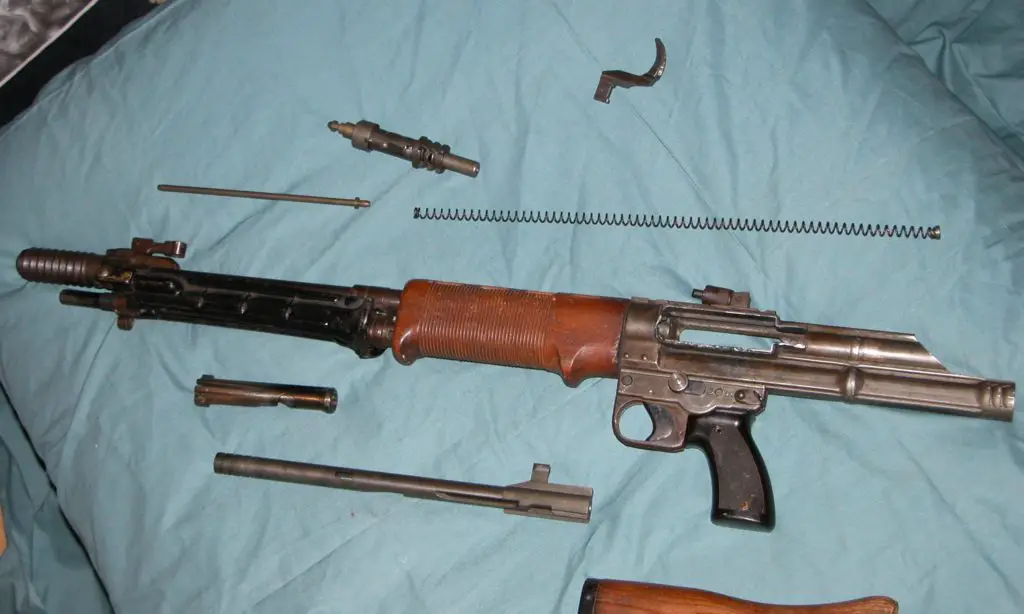
FG42. Note similar op rod and bolt (Forgotten Weapons photo).
Here is a copy of General Crozier’s memoir, Ordnance and the World War. This was originally scanned and posted by Google, but their OCR was a mess, so we re-OCR’d it and then compressed it, reducing scan quality to 75 dpi to make a much smaller file.
ordnance_and_the_world_war_4.pdf
We’ll likely have more to say on this later.
Wednesday Weapons Website of the Week: Carbines for Collectors
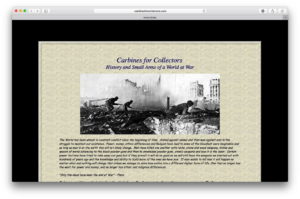 Carbines for Collectors is a website that has outrun its own name. Originally, it had pages on some of the key bolt-action carbines of the 20th Century, but over time it has evolved to contain a great deal of information on many weapons and the historical periods and events that they helped shape.
Carbines for Collectors is a website that has outrun its own name. Originally, it had pages on some of the key bolt-action carbines of the 20th Century, but over time it has evolved to contain a great deal of information on many weapons and the historical periods and events that they helped shape.
One of the reasons that this site may have been overlooked is that there are relatively few embedded pictures. Instead, the pages are mostly text, and the pictures are mostly linked. This does mean it loads lightning fast, and you don’t have to load pictures you don’t care about. But if you’re a visual learner, clicking back and forth might be frustrating for you.
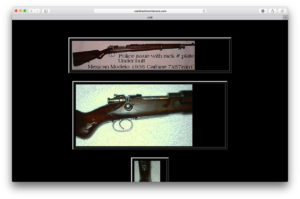 Despite the dense, high-quality content, it is a very simple collection of pages menued off the index page. Navigation is a snap, and if you want to learn the ins and outs of, say the rifles of the Spanish Civil War (an extremely complex period) or a specific rifle like the Mexican Modelo 1936 (left) then this is for you.
Despite the dense, high-quality content, it is a very simple collection of pages menued off the index page. Navigation is a snap, and if you want to learn the ins and outs of, say the rifles of the Spanish Civil War (an extremely complex period) or a specific rifle like the Mexican Modelo 1936 (left) then this is for you.
It isn’t only about rifles; there’s some good pistol content, too, and it isn’t just for collectors, because there’s plenty of meat for history buffs. It also has excellent pages that try to explain the small arms history of specific countries.
There are good essays on, for instance, the small arms of Bolivia (below)…
…or of many other nations, and even some small crew-served weapons like the Japanese 50mm “knee mortar” grenade launcher.
RK Smith, Dan Reynolds, and Cliff Carlisle are credited with this site, but at least some specific pages are written by well-known authorities — we noted that Ruy Aballe was responsible for the pages on Spanish pistols.
All in all, Carbines for Collectors is a good site for anyone interested in the military weapons of the world, especially those of the mid-20th Century.
What Our Readers Are Doing (WORAD): Land Nav
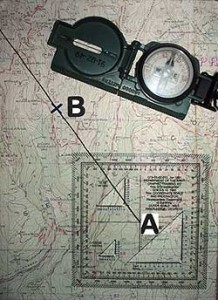 Teaching the kids to navigate, inspired by posts in this blog:
Teaching the kids to navigate, inspired by posts in this blog:
It was probably months ago that I ordered a topographical map of our immediate area, and bought a modern compass to use with it. With my trying to finish the RR coach, my daughter’s wedding, and other things; I haven’t been able to get serious about the map reading lessons shared at the Weapons Man Blog.
We took the map out into the woods and hills a while back, to see if we could spot the terrain features on the map. That was fun, but this was more serious instruction. I ordered the map with magnetic north lines printed on it; so I didn’t have to compensate (azimuth?) 3 degrees for that. In the pictures below is the story of how our first lesson went, and a few other activities.
We’re humbled, and pleased. The navigation came out a little off — not enough to be off the map sheet, but enough to show how difficult dead reckoning navigation really is. Trust us that, with practice and care, one gets a lot better at it.
The terms used when compensating for the delta between magnetic north and true north are Variation and Declination. These vary by location and time and maps can display them by showing isogonic lines (on a large-scale map like a Joint Operations Graphic, good for planning D-Day, or an aviation sectional chart) or a Declination Diagram (used on small-scale, topographic maps). The Declination Diagram also shows you how to compensate for change over time (in the short term, such change is predictable, and so mapmakers incorporate the trend in the legend of the map). Large-scale maps don’t do this because they’re replaced more frequently — the life span of an aviation sectional chart is a few months.
It is possible to automatically compensate for the true-magnetic angle (or, if using a grid system, grid-magnetic angle) on Google Maps by using Google Compass by the private Barcelona Field Studies Centre. We can’t vouch for its security or likely longevity, and unlike a paper map and compass, you’re not going to have Google Diddly when the grid is down, but for now it’s a useful learning tool.
Go Read The Whole Thing™ (his vehicle-painting stuff is interesting, too).
When Guns are Outlawed, Only Outlaws will have Meth & 18-wheelers
 This glowering clown motored into a conga line of halted cars at a construction zone in Tennessee. He came out fine, because he was higher than the International Space Station, flying on 40 hours straight of amphetamine-fueled sleeplessness, and wearing 40 tons of 18-wheeler. The poor squishy folks in the little crunchy cars underneath were not as fortunate.
This glowering clown motored into a conga line of halted cars at a construction zone in Tennessee. He came out fine, because he was higher than the International Space Station, flying on 40 hours straight of amphetamine-fueled sleeplessness, and wearing 40 tons of 18-wheeler. The poor squishy folks in the little crunchy cars underneath were not as fortunate.
He’s now held on half a million bail, and it turns out that the guy’s been caught using consistently for over two years, and was still out on the streets. Make that “highways,” literally.
A motor vehicle crash that killed six people on a Tennessee highway last year likely happened because a truck driver who failed to slow down in a construction zone was probably fatigued and had taken methamphetamine, federal investigators said Tuesday.
In its release of the probable cause findings for the June 2015 crash, the National Transportation Safety Board also cited a failure in the employee screening process to determine that driver Benjamin Brewer of London, Kentucky, had been fired from a previous trucking job two years earlier because of illegal drug use. A hair test administered under an unrelated court order less than three months before the crash had also turned out positive for meth.
The board also found that the Brewer had likely gone without sustained rest for 40 hours before the crash.
“The driver in this crash should not have been behind the wheel of a large truck,” said NTSB Chairman Christopher A. Hart. “As long as human beings drive trucks, they must be rested and unimpaired.”
Investigators said Brewer did not slow down from a speed of about 80 mph despite ample warnings that he was approaching a construction zone with a 55-mph limit on Interstate 75 near Chattanooga. There was no indication of heavy braking or that he tried to take evasive action before causing the crash, which involved seven vehicles occupied by 18 people.
via Tired truck driver high on meth caused car crash that killed six – NY Daily News.
Of course, the formality of a trial is still ahead of us, but this case makes us reconsider all the Westerns where the mob broke down the Sheriff’s door to lynch some malefactor. Were the courts really the good guys in those shows, when courts like them keep returning these monsters to the street until they finally ring the mass killing bell?

Kevin was a former Special Forces weapons man (MOS 18B, before the 18 series, 11B with Skill Qualification Indicator of S). His focus was on weapons: their history, effects and employment. He started WeaponsMan.com in 2011 and operated it until he passed away in 2017. His work is being preserved here at the request of his family.



